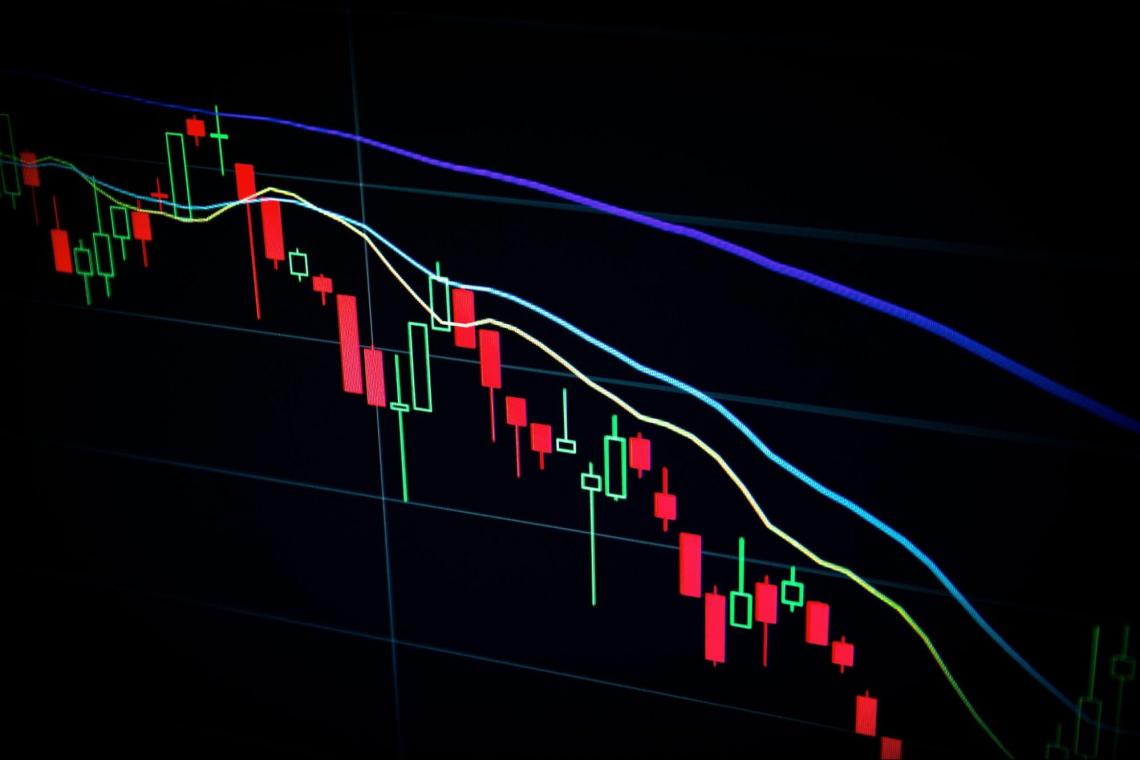Market Efficiency
The extent to which market prices incorporate available information.
Market efficiency is the extent to which market prices incorporate available information.

There may be cases when there is an opportunity to generate a profit by collecting and processing information when markets need more informationally incorporated. That is why market efficiency is a subject matter for the agents operating in the financial markets.
Moreover, governments and regulators of the market consider the extent to which the incorporation of information by market prices.
Efficient markets imply the price information that provides accurate and readily available information regarding the fundamental values of financial securities.
It is simple to determine which companies or enterprises are provided with the capital because of the information about the market prices in market-based economies.
If those prices will not efficiently provide information about the companies’ prospects, then obtained capital may be directed in the wrong direction.
However, when prices reflect the information efficiently, the limited resources will be directed to the capital’s most efficient and effective users. That is why prices that reflect the information efficiently contribute to economic growth.
In terms of the whole country, the capital market in which businesses raise capital to grow further is one of the critical drivers of the economy and one of the most crucial characteristics of a well-operating financial system.
Understanding the concept
There is a concept of an informationally efficient market (or an efficient market) which is about the market where asset or security prices reflect the newly-available information quickly and rationally.

As described above, agents of the financial markets, investment managers, analysts, and investors are interested in market efficiency. Due to that, the degree to which the efficiency of markets influences the number of profit-generating opportunities existing.
Nevertheless, risk-adjusted returns (excluding all expenses) are not available in a consistent and superior manner.
Therefore, there are two types of investment strategies in an efficient market;
- passive and
- active investment management strategies.
A passive investment strategy involves purchasing and holding a portfolio of securities that reflect the broad market, which does not provide superior risk-adjusted returns.
While active investment is a form of investment strategy that involves actively purchasing and selling investment securities to make a profit that outreaches a particular index or selected benchmark.

In an efficient market, passive investment strategies are preferred to active ones due to the lower cost. On the other hand, an active investment strategy requires high transaction costs and costs related to obtaining the information.
NOTE
In the case of an inefficient market, there may be opportunities for utilizing an active investment strategy, which may outperform a passive investment strategy based on risk adjustment.
That is why a solid understanding of the efficient market characteristics and the ability to evaluate the degree of efficiency of a certain market is quite an important matter for the agents of the capital markets and the economy as a whole.
Types
There are 3 forms of market efficiency, which are the following:
- Weak form
- Semi-strong form
- Strong form
Each of them reflects different situations in the market and the extent to the availability or easiness of obtaining the relevant and required information.

Moreover, various types of investment strategies and investment analyses are required to generate profit.
Each form of efficiency determines the performance of the markets and the investment strategies that can be suitable and asset classes that can be expected to be performing better than asset classes.
NOTE
Even investment analysts, financial analysts, and other market participants tend to determine the features and characteristics of the efficiency of financial markets before considering the investment or service to clients and institutions.
Only after determining the level of efficiency of markets, then finance professionals can present and provide their service in the best interest of their clients.
1. Weak form efficient market
The hypothesis of the weak-form market efficiency provides the securities that fully reflect all the past market information, which represents all historical price information and the related trading volume data.

Provided the market is weak-form efficient, stock price data will reflect all current information.
Conducting a test regarding whether security markets are weak-form efficient is determined by looking at the market price patterns.
One way to determine is by observing whether there is any correlation between investment security returns, which in turn indicate the predictable price patterns.

Despite the facts mentioned above and weak correlated daily security returns, there is not a sufficient correlation to provide this as a profitable trading strategy due to the related transaction costs.
Although, there is an alternative approach to determining the weak-form efficient market by examining the rules related to the specific trading rules, which attempts to utilize the historical trading information fully.
NOTE
This approach mentioned above is referred to as technical analysis, which requires a thorough analysis of past trading data. This data consists of pricing and volume data to determine recurring patterns in the trading data.
The finance professionals operating with the technical analysis are called technical analysts or just ‘technicians.’ Most technicians believe that many movements in securities prices are based mainly on the psychology of investors.
That is why many technical analysts try to determine and predict how security market participants behave, which can be based on an analysis of past behaviors; they will trade on those predictions and estimations.
2. Semi-strong form efficient market
Market prices represent all past information available and publicly known information in a semi-strong form of market efficiency. That publicly available information includes but is not limited to the following:
- Data from financial statements, like corporate investments, dividends, earnings, company management system changes, etc.
- Financial market data, such as traded shares, investment securities closing prices, etc.

In the short-term, the market represents all publicly available information, and historical information in the market prices is considered a semi-strong efficiency.
Resources utilized to analyze publicly available information could be more effective and efficient in the dominance of semi-strong form market efficiency.
NOTE
The analysis of earnings announcements of companies for the identification of undervalued or overvalued investment securities could be more productive since the market prices of those securities already represent all publicly available information.
Even if the market is semi-strong efficient, there is no single investor with access to the information that is not readily available to other agents in the market. Thus, no investor can get an advantage by predicting future investment security prices.

Even when a company announces higher-than-expected earnings, investors cannot act on that earnings announcement and generate abnormal returns in a semi-strong, efficient market.
Moreover, market share prices react rapidly and accurately to publicly available information in a semi-strong form of market efficiency.
That is why the information that is good news or better than expected earnings news, market participants would expect companies' market shares to increase within a moment of an announcement.
Provided the announcement is about bad news, market participants would expect a negative reaction.

But when the actual investment returns exceed what was previously expected during the period without an announcement, those returns are restricted to the announcement period.
In this matter, they are consistent with the idea of the rapid reaction of market prices to new information.
In other words, the excess return found during the announcement does not indicate an inefficient market. Comparatively, the findings regarding the consistent excess return following the announcement do not indicate market inefficiency.
3. Strong form efficient market
Investment security prices fully reflect at the same time both public and private information in a strong form efficient markets. And again, a market that is strong form is also considered a semi-strong form and weak form by definition.

In a strong market efficiency, investors with insider information would be unable to earn abnormal returns.
The strong form also reflects that market prices provide private information, which means that all company managers are aware of the company’s financial position that is not publicized and is reflected in the market prices.
Although, this is something not likely to happen due to the legal prohibition of insider trading that can be found in most countries. Provided a market is in a semi-strong form, then those investors with insider information will not be able to earn abnormal returns.
NOTE
Investment managers, analysts, and other participants consider the implications of efficient markets important since they influence the value of investment securities and how they are managed and controlled.
The evidence can know several implications of an efficient market in economically developed countries:
- Financial markets are considered weak-form efficiency; thus, investors cannot earn abnormal returns via trading based on past price trends.
- Markets are also semi-strong forms; thus, investment analysts collecting and analyzing information are mindful that investors cannot use technical or fundamental analysis to generate higher returns.
- Financial markets are not a strong form efficient since the related security laws are implemented to prevent exploiting private-held information.
Market pricing anomalies
Market anomalies in persistency are considered exceptions to the concept of market efficiency.
According to some research, a market anomaly may become present, provided a change in the price of an investment security is not directly connected to the current and relevant information known in the market or the release of new information.

The validation of any evidence supporting the potential existing market inefficiencies or any particular anomaly must be consistent during long periods. Or else, a market anomaly may be human-made for the period's chosen sample.
By widespread search to find profitable anomalies, those findings could be the result of the process referred to as data mining or data snooping.
NOTE
Data mining refers to using large data sets to find patterns and relationships useful to solve complicated problems via data analysis. Data mining helps businesses to forecast future trends and make mindful business decisions.
Behavioral finance
Behaviors of participants in the security markets are considered one of the impacting aspects of the extent of the efficiency of security markets—behavioral finance studies the behavior of investors to understand how people decide in an individual and collective order.

Behavioral finance does not have the assumption that people utilize all available information in the decision-making process and activities that work rationally for the optimal utility within their budget constraints, including the update of their expectations.
The resulting behaviors of investors, investment managers, and analysts may affect what is observed in the security market.
NOTE
In the broader case, behavioral finance explains why market participants decide in a particular way that they act, which may be rational or irrational.
In asset pricing models, those models assume that security markets are rational and that investment securities' intrinsic or fair value represents their rationality.
Nevertheless, asset pricing models and market efficiency have no requirement of having each investment security be or act in a rational way, but only the markets are considered rational.
When an investor becomes out of rationality, the rest of the market participants observe this change and act on their decision on their investment securities accordingly. And those responses by the investors move security markets toward a more efficient form.









or Want to Sign up with your social account?